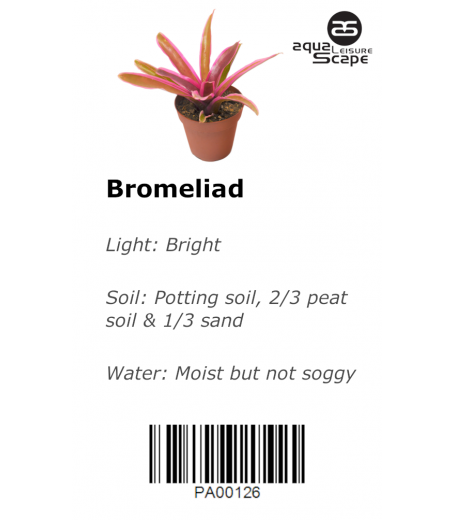BROMELIAD
- RM25.00
Bromeliads (Bromeliaceae genera) are tropical-looking epiphytes that are easy to care for in average home conditions. Bromeliads are known for their beautiful multicolored foliage in red, green, purple, orange, and yellow, some including bands, stripes, spots, and other features.
Although there are about 2,500 species plus thousands of hybrids and cultivars, the best bromeliads for beginners include those in the Guzmania, neoregelia, and Vriesea genera.1 This indoor plant is completely safe for pets and is shown to purify the air, which makes bromeliads some of the most popular houseplants to grow.
| Common Name | Bromeliad |
| Botanical Name | Bromeliaceae genera |
| Family | Bromeliaceae |
| Plant Type | Perennial |
| Mature Size | Varies by genera and species |
| Sun Exposure | Partial |
| Soil Type | Well-draining |
| Soil pH | Acidic |
| Bloom Time | Blooms once; timing varies |
| Flower Color | Red, green, purple, orange, yellow |
| Hardiness Zones | 10-11 (USDA) |
| Native Area | North America, Central America, South America |
Light
Provide bright, indirect light unless your bromeliad prefers a different light level. Generally, varieties with soft, flexible, spineless leaves usually prefer lower light levels, while those with stiff, hard leaves prefer bright indirect light. Some even withstand full tropical sun, while others quickly scorch.
Plants that turn yellowish might be getting too much light, while dark green or elongated plants might receive too little light.
Soil
Bromeliads grown indoors thrive in fast-draining potting soil that holds moisture. A mixture of 2/3 peat-based soil and 1/3 sand is ideal. Or use orchid mix, charcoal, or soilless potting mix. Many epiphytic bromeliads can be grown in containers, or grown as authentic "air plants" mounted to boards or logs.
Water
Some bromeliads tolerate drought conditions, but they prefer moist, not soggy, soil. In a typical house, it's usually not necessary to keep the central cup of the plant constantly filled with water unless you have bright light and high temperatures in your home.
Flush the central cup every so often to remove built-up salts. Water the soil sparingly when the top 2 inches feel dry to the touch. Water weekly during the growing season and reduce frequency during the winter.4 Epiphytes (air plants without soil) need misting and a good soaking by submerging them in water once per week.
Temperature and Humidity
Bromeliads need protection from the cold. If you live in a climate with freezing temperatures, plant bromeliads in pots brought inside for the winter. Bromeliads prefer temperatures between 60 and 85 degrees Fahrenheit. Some cold-hardy types can survive temperatures down to 20 degrees Fahrenheit but generally, they can't thrive under 40 degrees Fahrenheit.4
They grow well indoors in 40-50 percent humidity. In many climates, bromeliads can be moved outdoors during the summer.
Fertilizer
Bromeliads are not heavy feeders. During the growing season, use a liquid fertilizer diluted at half strength. Avoid feeding mature plants in winter or when the plant begins to flower.
Reviews
There are no reviews for this product.



